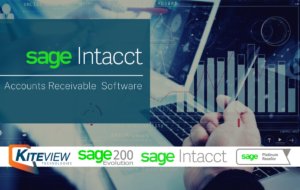Article credit: Sage
In the past, the CFO role might have been more comparable to someone focused on crunching the numbers, rather than the C-suite figurehead we know now.
CFOs were more focused on history – generating reports about the past through business processes.
Today, if you are in the CFO role, your business needs you to focus on strategy, analysing both current and future growth prospects.
You need to have a more holistic view of business operations and market development, being in tune with customers, products and services, all the while increasing value.
But how can you deal with these increasing demands both now and the future? With technology.
Technology is what you to transition from being the manager of finances via a view of the past to become the person in charge of unlocking of the most valuable future opportunities.
Technology is integral to modern businesses.
Without technology, digital transformation is impossible, and your finance function won’t be ready and equipped to meet the challenges both now and one, five and 10 years down the line.
You need to embrace innovation and arm your finance team with the right tools to improve and increase effectiveness.
Finance leaders agree that technology is the top way to improve the effectiveness of the finance function.
So what should you be focusing on when it comes to using technology to improve your finance processes? We cover some key areas in this article.
Data quality and data science
What is it?
Data science, as applied to finance, is where you build systems and processes to extract data, which allows you to draw insight you can use to predict the future, and make evidence-based decisions and suggest improvements.
Why should you adopt it?
According to executive search firm Leathwaite, 51% of finance functions are already using data quality and data science, while 36% are planning to use it.
With data science and better data quality, you can better understand customer needs and dig out patterns that help you know where you should put your investment.
Steps to take to adopt it
To put data at the heart of long-term business success you should focus on six areas:
- Make a case for data as integral to the business strategy by identifying proof of concept projects
- Align the analytics capability and delivery with priority business requirements
- Help instil the right leadership and culture
- Provide training to help individuals recognise decision biases – the psychological assumptions that often lead to poor decision-making
- Provide easy-to-use tools for users of data
- Transform the analytics-based insights into actions, and align incentives, rewards and measurement accordingly.
Automation
What is it?
Automation, as it relates to finance, is the use of financial software to automate tasks such as accounts reconciliation and preparing financial statements and reports, without the need for humans to spend lots of time doing so.
Why should you adopt it?
Automation can relieve your finance team of menial and tedious tasks, allowing you and your team to spend more time on more strategic tasks.
Steps to take to adopt it
1. Understand what kind of automation you need
Every business is different, and it’s crucial to get the best value for the automation you implement and the best for your business needs.
There are different types – from variations that help businesses automate daily tasks, to more advanced types that combine with machine learning to perform more complex actions in response to human interaction.
2. Start automation in the right departments
You’ll know from a bit of analysis which tasks automation would help. Automation could undoubtedly help in back-office processes in the finance department.
It could automate processes in areas such as marketing, legal, sales and the supply chain. Aim for quick wins allowing you to visualise a future roadmap.
3. Ask if automation makes economic sense
When looking at the opportunities for automation within departments, you should question how economically viable these opportunities are for the business.
For instance, you should investigate the return on investment. Get the relevant stakeholders in from the departments in question and try and create a business case.
4. Get management buy-in
You need to get information straight from stakeholders on what they understand when it comes to automation and how it would be able to benefit them.
You and other members of the leadership team should help the wider business understand what automation can do and how it could make their working lives more comfortable, letting them focus on more critical, less repetitive tasks.
5. Work at the right speed
The IT team can provide technical expertise and to make sure the implementation runs smoothly and at the right pace.
The technical leadership need to adopt a strategy of starting small, getting the business used to the technology, and expanding it out when the company gets used to the changes.
AI/machine learning
What is it?
Artificial intelligence (AI) is an all-encompassing term that covers all technology that can mimic human intelligence and has been in development since the 1950s.
A type of AI, machine learning allows systems to learn and improve through experience, without needing to be explicitly programmed.
Why should you adopt it?
Machine learning means computers can handle new experiences through analysis, self-training, observation and experience.
It allows computers to learn automatically without human intervention or assistance through complex algorithms so you can analyse massive amounts of data.
21% of finance teams are already using AI/machine learning, while 46% are planning to use it.
Steps to take to adopt it
Initially ask these fundamental questions:
- Can the application of AI/machine learning make your business run more effectively and efficiently?
- Can AI/machine learning solve your business problems?
- Can AI/machine learning make your business more profitable?
The likelihood of AI solving some of your biggest challenges grows as the technology gets closer to maturity. You must have a clear focus on what AI/machine learning can do to achieve your business goals – this must be the driving force.
If you’re thinking about practical AI/machine learning business applications, you could look at how computers process and identify patterns in data.
They do this much more effectively and efficiently than humans, allowing much better insight.
Standardised, ‘off-the-shelf’ AI/machine learning services might address simple scenarios such as image recognition and voice to text.
But advanced predictive scenarios that provide more business value require much more sophisticated and customised solutions tailored to their specific business and operational needs.
Adopt use tech to be more effective
As a CFO, you’re in the prime position to oversee the technology needed to support and grow your business, drive digital transformation, and commit your company to change.
Of course technology by itself won’t lead to improvement – that’s why you’re there to set clear goals and make sure the right tools are used in the right way.
Support your business in investing in the right technologies through your knowledge of what they can do to drive your company forwards.
Kiteview Technologies (Pty) Ltd was founded in May 2010 to provide the Sage Evolution Business Management solution to the SME market. The management team of Kiteview have combined +30 years of experience in the delivery of small to mid-market Financial & Business Management solutions. This experience, combined with a sound project implementation methodology has helped in Kiteview’s growth, becoming a Platinum status partner for SAGE Pastel within just 1 year.
Contact Us
For An Obligation Free Quote








